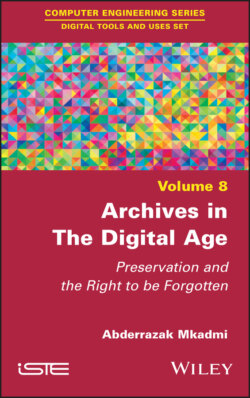Читать книгу Archives in the Digital Age - Abderrazak Mkadmi - Страница 34
1.5. ECM: the overall data management strategy
ОглавлениеECM (Enterprise Content Management) is a term that has often been confused and used in the same way as ERM, IDMS (Integrated Document Management Systems), RM or even EDRMS. We have previously presented the main characteristics of each of these terms and we have shown that EDRMS has merged the two ERM and RM technologies. Since then, several important evolutions and additions have been made, both to the content to be managed by the latter technology, consisting, in particular, of integrating emails and different workflows, and also, and above all, to the management environment that has become the Web (see Figure 1.10).
Figure 1.10. Evolution of different concepts leading to ECM [KAT 12], For a color version of this figure, see www.iste.co.uk/mkadmi/archives.zip
We can therefore summarize, according to [KAT 12], the process of the evolution of concepts in three phases:
– the first phase is represented by the ERM and RM concepts;
– the second phase is marked by the IDRMS and EDRMS concepts;
– the third phase is marked by the term ECM, which represents a type of system that includes ERM, RM, workflow, BPM (Business Process Management), portals, KM (Knowledge Management) systems and so on.
In this sense, ECM includes all the tools, methods and strategies for managing content regardless of its nature, whether structured or unstructured, and its type [AII 10]. It provides collaborative tools to facilitate teamwork and to improve and refine work processes. By targeting organizational processes, these methods and strategies are illustrated in several modules (see Figure 1.11).
Figure 1.11. The modules of a typical ECM application [KAT 12]. For a color version of this figure, see www.iste.co.uk/mkadmi/archives.zip
Enterprise content management is therefore a working platform that includes a number of modules that can be expanded according to the needs, size and objectives of the company and that are defined in the document management policy. It can include, among others, several fundamental modules, which are records management, workflow, business process management, collaboration, knowledge management, digital asset management, digital rights management and web content management [KAT 12].
The advantages of this technology are that, compared to the other technologies mentioned above, it provides a complete mastery of the different business lines and functions of the company, and consequently a control over the different documents and incoming and outgoing flows. With collaborative tools, ECM ensures more collective intelligence. Nevertheless, to manage digital archives, it must be accompanied by a policy of awareness of different users in order to develop a culture of sharing and openness on new methods of processing, management, access and dissemination of archives, as well as new practices and the roles of archivists12.
